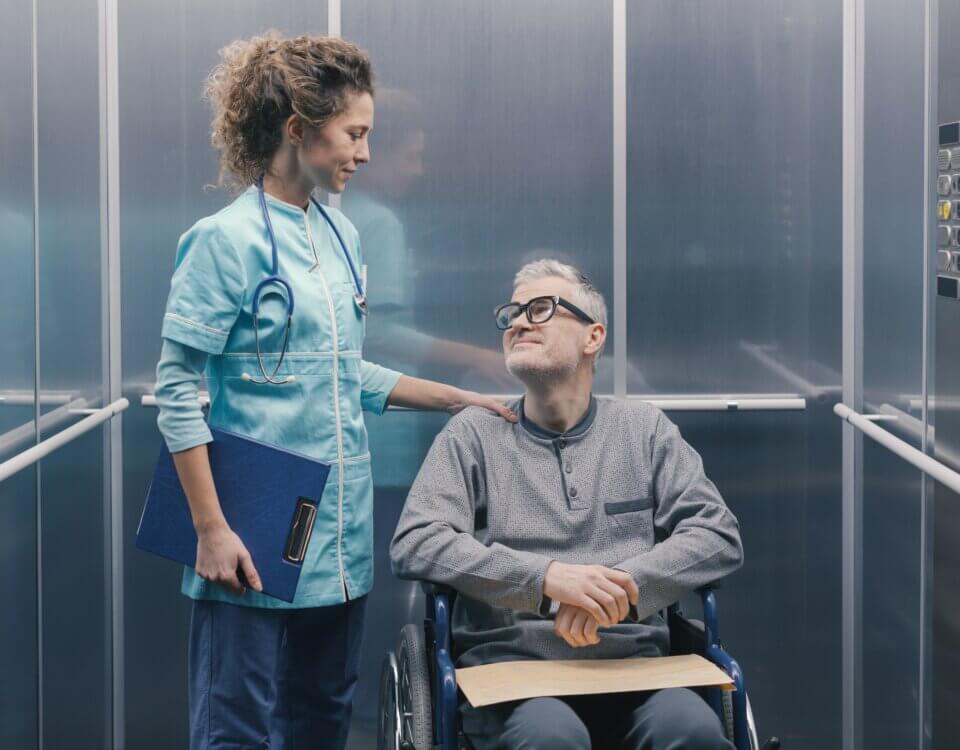An estimated two million people in the United States have lost a limb and more than five hundred people undergo an amputation every day. While amputation is often necessary to save a life, losing an arm or leg brings major physical and emotional challenges. It may follow disease or a traumatic injury.
Common Causes of Limb Loss
Many limb amputations result from serious accidents such as car, boat, or motorcycle crashes. In cases of traumatic injury, the procedure is often performed to preserve the life of the patient.
The Amputation Process
Surgeons strive to preserve as much healthy tissue as possible when determining which portions of limbs are damaged beyond repair and which can be saved. After amputation the surgeon seals blood vessels, bones, and nerves. Muscles are shaped in preparation for prosthetic fitting. For the patient the surgery signals the end of one stage and the start of a new and difficult journey.
Recovery
Recovery after amputation can take months or years of physical therapy during which patients often experience severe pain. Many people face phantom pain in which the brain continues to receive sensations from nerves in the limb that is no longer there. These sensations may feel like burning, itching, or shooting pain.
Emotionally the recovery can be just as hard. Losing a limb often leads to depression, especially early in recovery. Everyday activities become harder. Favorite tasks and hobbies may no longer be possible. Work or routines may change.
Despite everything there is hope. Advances in prosthetics and rehabilitation help many people regain mobility and independence. Emotional support from family and friends plays a crucial role. With time many adapt, find new purpose, and rebuild their lives despite their injury.
How Hillstone Law Can Help
If you or a loved one has lost a limb in an accident we understand the physical, financial, and emotional toll. We offer guidance on obtaining compensation for medical care, prosthetic devices, therapy, lost wages, lifestyle changes, and emotional injury. You do not face this alone.
Note: These blog posts are created solely for the use of Hillstone Law. The information is gathered from internet research, publicly available sources, and artificial intelligence (AI) tools such as ChatGPT. While we aim to share helpful and educational content, Hillstone Law does not independently verify every detail. Some information may be incomplete, outdated, or subject to change without notice. If you believe any part of a post is inaccurate, misleading, or infringes upon copyright, please contact Hillstone Law immediately so we can review it and take appropriate action, including correction or removal.
Disclaimer: The material provided in these blogs is for general informational purposes only and should not be considered legal advice. Reading these posts does not create, and is not intended to create, an attorney-client relationship with Hillstone Law. Our intent is to share knowledge, raise awareness, and provide helpful resources to the public; however, Hillstone Law makes no warranties or guarantees about the accuracy, completeness, or reliability of the information provided, and expressly disclaims liability for any actions taken in reliance on it. The photos used in these posts are for illustrative purposes only and do not depict actual clients, individuals, or incidents unless expressly stated. If you or a loved one has been injured in an accident, please contact Hillstone Law at (855) 691-1691. Our attorneys are available to answer your legal questions and help you understand your rights.







